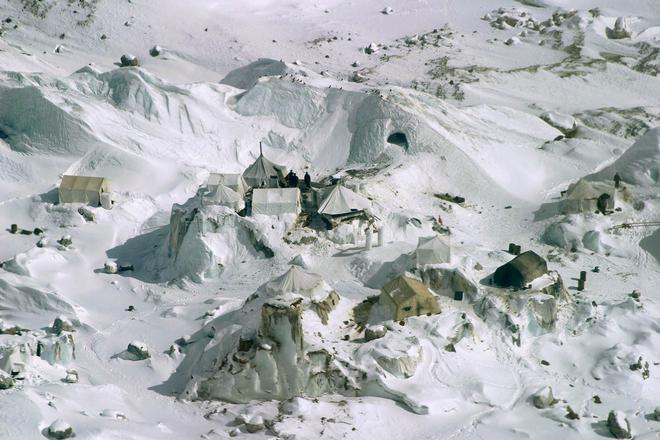The induction of heavy-lift helicopters and logistic drones, deployment of all-terrain vehicles and laying of an extensive network of tracks are among a host of measures that have enhanced India's combat prowess in Siachen, the world's highest battlefield, officials said on April 13.
As the Indian Army marks the 40th year of its presence on the strategically-significant Siachen glacier, the officials said there have been extensive improvements in the operational capabilities of the force due to the enhancement of infrastructure in the region in the last few years.
Also read: Explained | What are the friction points on the LAC?
The Siachen glacier at the height of around 20,000 feet in the Karakoram mountain range is known as the highest militarised zone in the world where soldiers have to battle frostbite and high winds.
Under its "Operation Meghdoot", the Indian Army established its full control over the glacier on April 13, 1984.
"The Indian Army's control over the Siachen glacier has not only been a story of unparalleled valour and determination but also an incredible journey of technological advancements and logistical improvements that transformed it from one of the most formidable terrains into a symbol of indomitable spirit and innovation," said an official.

The initiatives, especially laid out in the last five years, have made significant strides in improving the living conditions and operational capabilities of the personnel deployed in Siachen, he said on the condition of anonymity.
In January last year, Captain Shiva Chauhan from the Army's Corps of Engineers was posted at a frontline post in the Siachen glacier, in the first such operational deployment of a woman Army officer at a key battlefield.
The official cited above said there has been a noteworthy improvement in the aspect of mobility in Siachen.
"The development of an extensive network of tracks and the introduction of all-terrain vehicles (ATV) have significantly improved mobility across the glacier," he said.
Another official said innovations like the DRDO-developed ATV bridges have enabled the Army to overcome natural obstacles, while high-quality "Dyneema" ropes in aerial cableways ensure seamless supply lines to even the most-remote outposts.
"The induction of heavy-lift helicopters and logistic drones has vastly improved the supply of essentials to the personnel deployed in posts that are cut off, especially in winters," he said.
"The availability of special clothing, mountaineering equipment and advanced rations has enhanced the ability of the soldiers to withstand the harsh conditions of the world's coldest battlefield," the official added.
He said gadgets, such as pocket weather trackers, with each soldier provides timely weather updates and warn them about possible avalanches.
"Recent initiatives concerning the improvement of connectivity have ensured that the personnel in forward posts in the northern and central glacier regions have access to fresh ration and vegetables instead of tinned ration, an aspect that could not have been imagined a few years ago," the official said.
"Fresh ration and vegetables are now a reality for our forward posts, thanks to new logistic initiatives," he added.
There has been a focus on improvement in mobile and data connectivity in the region as well.
"The introduction of the VSAT technology has revolutionised communication on the glacier, providing the troops with data and internet connectivity," the second official said.
"This leap in technology has enhanced real-time situational awareness, telemedicine capabilities and the well-being of our soldiers by keeping them connected with their families," he said.
The VSAT or very small aperture terminal is a data-transmission technology.
The Army has also been focusing on boosting the medical infrastructure in Siachen.
The Indian Space Research Organisation (ISRO) has established telemedicine nodes that provide critical medical support not only to the troops but also to the local populace and tourists in the Nubra valley.
"The medical facilities in Partapur and the base camp boast of some of the best medical and surgical specialists, state-of-the-art HAPO chambers and oxygen generation plants, besides life-support systems. This has ensured that all endeavours are made to save every life in this challenging terrain," said a third official.
The HAPO (High Altitude Pulmonary Oedema) chamber is a life-saving device that provides emergency treatment in medical conditions relating to breathlessness and accumulation of fluids in the lungs etc.







